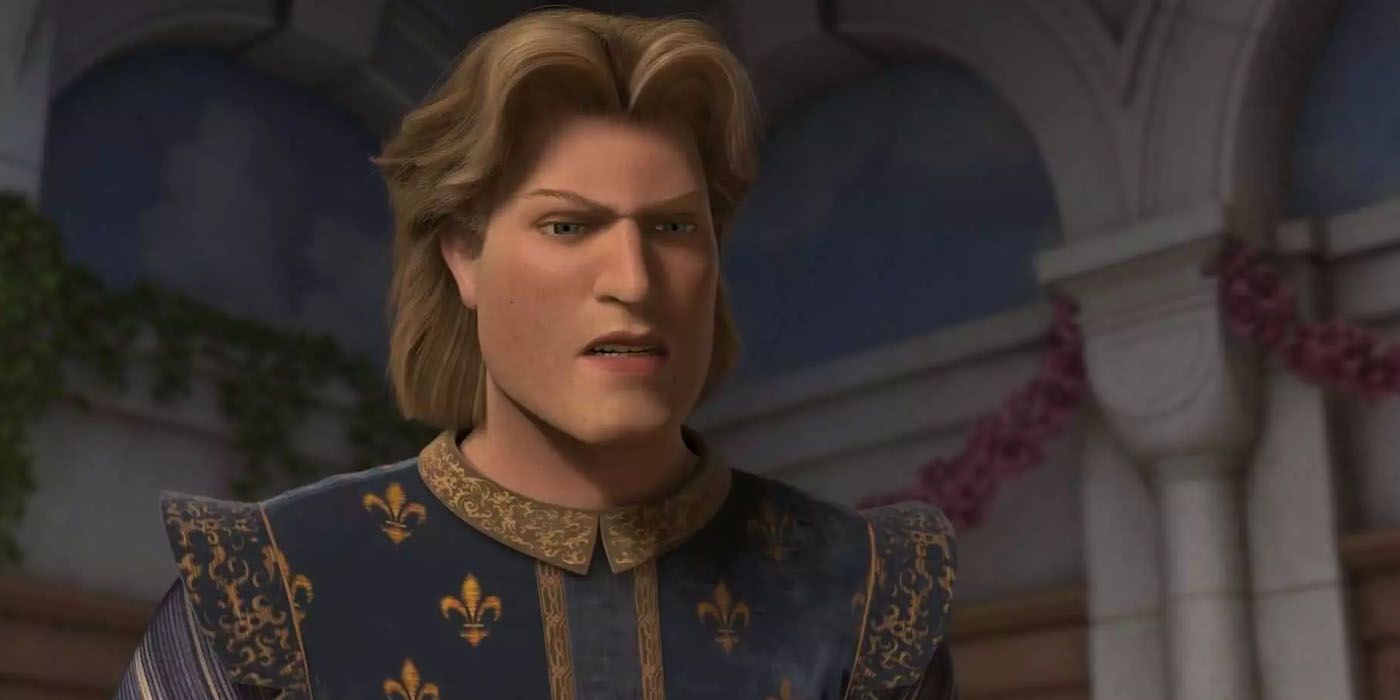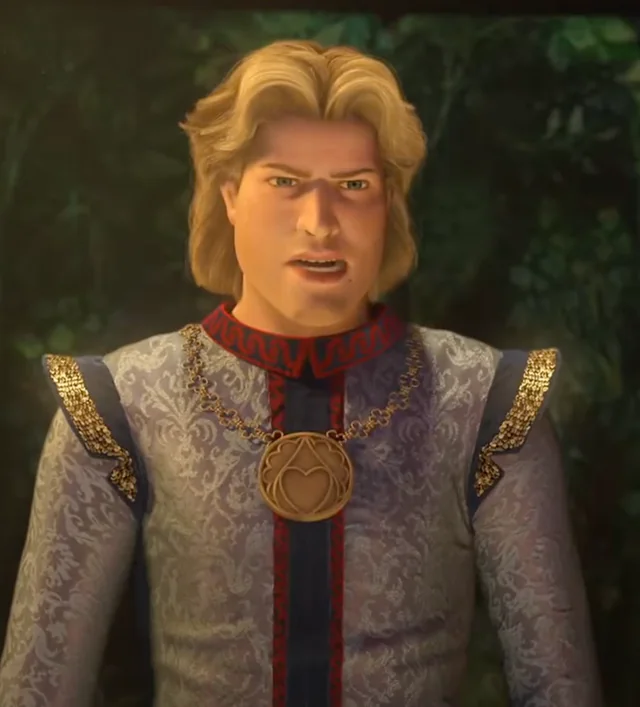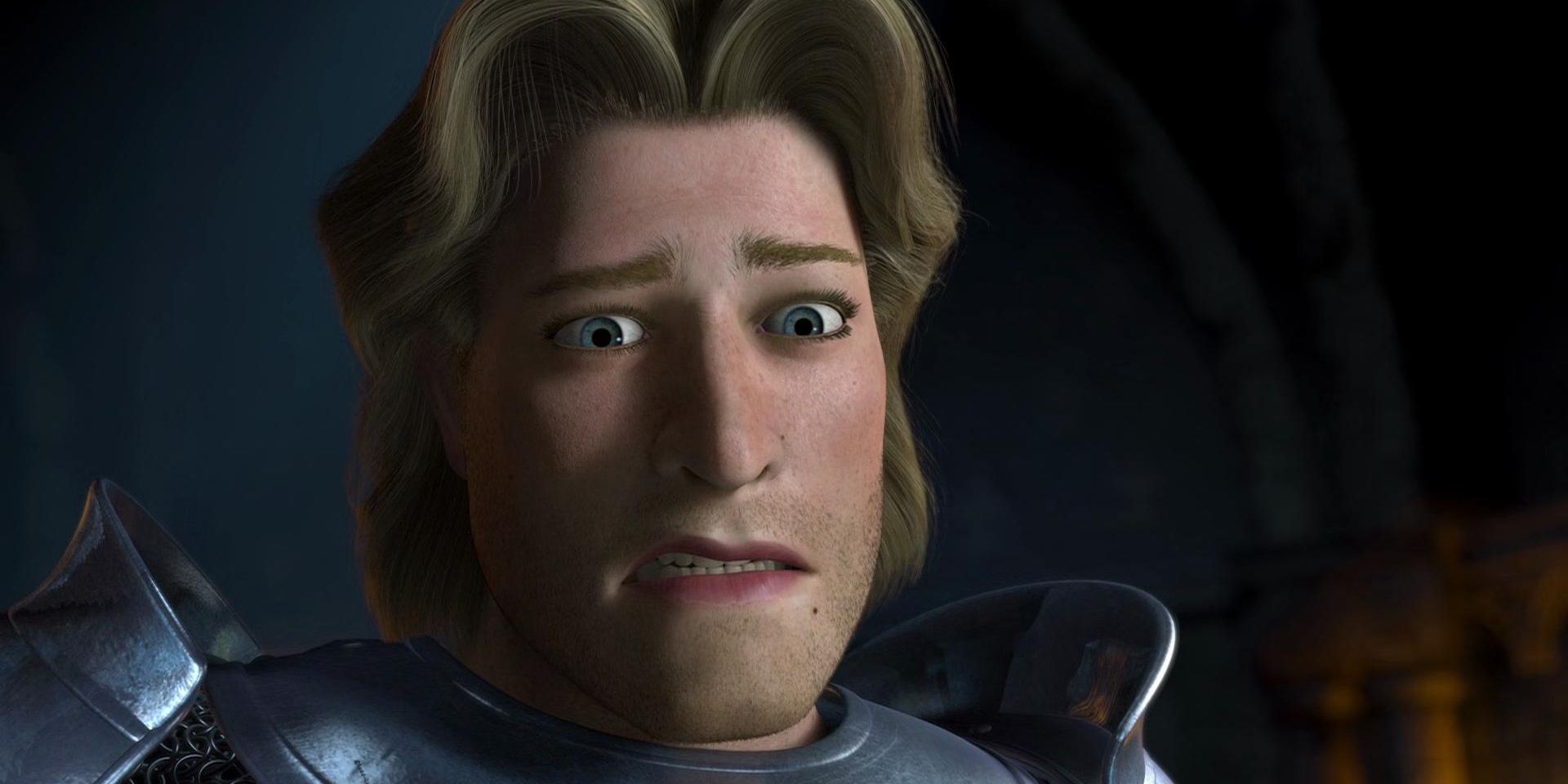Prince Charming In Shrek: Antagonist Analysis & More!
Is there a character in the Shrek universe more deserving of a second glance than Prince Charming? Beyond the shimmering facade and the perfectly coiffed hair lies a complex figure, a foil to Shrek's gruff exterior, and a key player in the fairytale-gone-wrong narrative. From his initial introduction as the supposed rescuer to his evolution into a full-fledged antagonist, Prince Charming's journey is a masterclass in subverting expectations.
Prince Charming is not just a pretty face; he's a plot device, a symbol, and a surprisingly nuanced character. In the bustling world of Far Far Away, where fairy tales are turned on their heads, Prince Charming represents the traditional, the expected, and the often-flawed ideals of happily-ever-after. His presence challenges the audience to re-evaluate the very definition of a hero and a villain within the context of the Shrek franchise. So, let's delve into the world of Prince Charming, exploring his motivations, his relationships, and his lasting impact on the Shrek saga. This exploration is not just about a character; it's about the narrative complexities of a much-loved film series.
| Aspect | Details |
|---|---|
| Name | Prince Charming |
| First Appearance | Shrek (Mentioned), Shrek 2 (Significant Role) |
| Voice Actors | Rupert Everett (Shrek 2, Shrek the Third), James Arnold Taylor (Various video games) |
| Family | Fairy Godmother (Mother) |
| Personality Traits | Narcissistic, ambitious, entitled, vain, manipulative, ruthless, persistent. |
| Alignment | Antagonist |
| Goals | To marry Princess Fiona and become King of Far Far Away. |
| Enneagram Type | Reportedly, 3w4 (The Achiever with a hint of the Individualist), suggesting a desire for success and a drive to stand out. |
| MBTI Type | ESFP (Entertainer), highlighting his love for attention and his ability to live in the moment. |
| Notable Relationships | Fiona (Target of his affection), Fairy Godmother (Mother and mentor), Shrek (Rival), King Harold (Blackmailed into his schemes). |
| Memorable Quotes | "And you, Fiona, will be mine!", "Mirror, mirror, on the wall... who's the fairest of them all?", "I'm Prince Charming!" |
| Appearances in Shrek Franchise | Mentioned in Shrek, Main antagonist in Shrek 2 and Shrek the Third, Cameo in Shrek Forever After. |
| Role in the story | Primary antagonist, foil to Shrek, symbol of traditional fairytale tropes. |
| Strengths | Good looks, charisma, manipulative skills, persistence. |
| Weaknesses | Over-reliance on appearances, lack of genuine empathy, often underestimated. |
| Trivia | His character is a parody of the traditional "Prince Charming" archetype. His plans are consistently thwarted by Shrek and his friends. |
| Reference | Shrek Fandom Wiki |
The Shrek franchise, a satirical take on fairy tales, presents Prince Charming not as the knight in shining armor, but as a spoiled, self-absorbed individual driven by an insatiable desire for power and recognition. From his introduction in "Shrek 2," where he arrives to rescue Princess Fiona, to his increasingly desperate attempts to claim the throne, Prince Charming embodies the darker side of ambition. He is a stark contrast to the ogre Shrek, who is motivated by love and genuine connection, and a character whose schemes become increasingly convoluted, highlighting his lack of originality and his dependency on others to achieve his goals.
In his quest to win Fiona's hand, Prince Charming's strategy is not one of chivalry, but one of manipulation and deceit. He aligns himself with his mother, the Fairy Godmother, who provides him with the tools and resources he needs to further his agenda. Their partnership, however, is based on mutual ambition rather than familial affection. The Fairy Godmother sees in Prince Charming the potential to gain power through Fiona, while Prince Charming, in turn, exploits his mother's influence. He even resorts to blackmailing King Harold, Fiona's father, further illustrating his ruthlessness.
His role in the Shrek universe goes beyond being a simple antagonist. Prince Charming acts as a catalyst, driving the plot forward and highlighting the core themes of the franchise. He is a constant reminder of the superficial values that often permeate the fairytale world, standing in stark contrast to the genuine connection between Shrek and Fiona. His failures and setbacks serve to underscore the importance of inner beauty and true love, as opposed to the superficial standards of the classic fairytales. His character is a mirror, reflecting the vanity, entitlement, and the often-hollow nature of ambition.
The voice acting also plays a crucial role in the character's portrayal. Rupert Everett's performance in "Shrek 2" brings a distinctive blend of arrogance and comedic timing to the role. His voice adds layers to the character, from the smooth, manipulative tones to the moments of exasperation and outrage when his plans unravel. James Arnold Taylor, who voiced Prince Charming in various video games related to the franchise, also contributed to the character's appeal, especially in the extended universe.
The visual presentation of Prince Charming further emphasizes his character traits. He is always impeccably dressed, his hair perfectly styled, and his face carefully composed. This emphasis on appearance underscores his vanity and his reliance on superficial charm. The contrast between his polished exterior and his morally questionable actions contributes to the satire that defines the Shrek franchise.
The recurring theme of subversion in the Shrek series is exemplified by Prince Charming. He appears in the story as the quintessential Prince, only to have his attempts at heroism backfire. He is ultimately revealed to be inept, a man whose reliance on his mother's power and his own superficial charm leaves him ill-equipped to face the genuine love between Shrek and Fiona. This subversion serves to dismantle the traditional fairytale tropes and to highlight the importance of looking beyond appearances.
In "Shrek the Third," Prince Charming takes center stage as the main antagonist. Here, he seeks to become king by force, showing his willingness to use any means necessary to achieve his goals. He gathers a coalition of fairytale villains, a clear nod to his own villainous nature. His attempts to seize power are ultimately foiled, reinforcing the film's theme of embracing inner qualities over external appearances.
The character's presence sparks numerous jokes and references throughout the franchise. From the shop names that cleverly incorporate fairytale allusions, to the gags about donkey never getting the same treatment, Prince Charming serves as a source of consistent humor, and his presence helps maintain the series' comedic tone.
Moreover, Prince Charming's character arc is not only comedic but also thought-provoking. His failure to win Fiona's love exposes the hollowness of his pursuit. The audience witnesses his emotional breakdowns and outbursts, highlighting his vulnerability beneath the confident facade. The contrast between his external perfection and his inner flaws generates a sense of satirical humor and allows the audience to view the character as an object of ridicule.
Prince Charming's failure to win Fiona's heart, again and again, is one of the most significant factors contributing to his role as a comic figure. Fiona, in the end, chooses Shrek, the ogre, over the handsome prince. This choice not only subverts the conventional fairytale ending but also highlights the importance of inner beauty, love, and the acceptance of imperfections. Prince Charming's inability to grasp these values condemns him to repeated failure and mockery, and that also strengthens the core message of the Shrek franchise.
The theme of the Death character is also an intriguing aspect, with the idea that Death is present at major events in the franchise, and the presence of the wolf, this adds a layer of depth, adding to the lore around each of the characters fates. The presence of these moments also contributes to the audience's experience, making the films more connected within the larger narrative.
In "Shrek Forever After," Prince Charming makes a cameo appearance, illustrating the depth of the character's failure. Even in a world where Shrek never existed, Prince Charming's attempts to capture Fiona are thwarted. This appearance serves to underscore his consistent lack of success and his inability to achieve the fairytale ending he craves.
Prince Charming's legacy in the Shrek franchise is secure. He's a caricature of a classic fairytale villain, and serves as a comedic foil to the heroic Shrek. He embodies all the weaknesses of the traditional fairytale trope. While his plots are often foiled and he is often ridiculed, his impact on the narrative and his contribution to the comedy and heart of the franchise are unmistakable. He remains a complex character whose personality is a subject of debate. He is far from the hero he claims to be. Prince Charming is more than just a villain, he is a symbol of the entire world in the Shrek franchise.



Detail Author:
- Name : Deanna Volkman
- Email : bahringer.oswaldo@hotmail.com
- Birthdate : 1995-10-19
- Address : 914 Favian Park Suite 586 South Chaya, MI 84290-8495
- Phone : 907.642.1235
- Company : Jones-Smitham
- Job : Grounds Maintenance Worker
- Bio : Repellat corrupti sed magnam deleniti et tempora aut. Non et molestiae voluptas magnam. Earum odio veniam dignissimos placeat et.